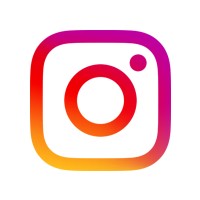Social Media
Social media is an umbrella term that describes any web-based or mobile application for human interaction through digital networking. Social media networking includes both casual and professional interactions. A social media application requires users to create an account, from which they can post text or multimedia content.
In this definition...
What does social media do?
Social media:
- Provides an online platform for individual users and businesses to share web content
- Provides a way for entrepreneurs to engage with potential customers and build awareness for their brand
- Provides advertising opportunities to third-party businesses, which purchase ad space
- Provides networking opportunities to businesses, expanding their customer reach and ways to form relationships with potential customers
Features of social media
Social media platforms typically have:
- A main feed that showcases posts and content from people or organizations the user interacts with or follows.
- A “post” window that allows a user to customize content before sharing it. Customizing might include adding a description (like on a video) or posting a set of photos along with text. Some social networking sites may also have simple markup features for posts, allowing users to bold, italicize, resize, or color text.
- A search bar that allows users to browse topics of their choice within the application.
- Hashtags or another grouping feature to categorize and tag specific content.
What are 7 types of social media?
Websites and applications that focus on social interaction take the following forms:
- Social networking. This is what internet users most commonly think of when they hear the term “social media.” Facebook falls into this category, as does LinkedIn, a professional networking platform.
- Microblogging. Very brief, easy-to-post pieces of content describe microblogging. Users typically share short snippets of text or short videos or GIFs. These websites or applications may restrict the length of the content (like Twitter, which has a 280-character limit for its posts).
- Media sharing. This is sometimes divided into photo- and video-sharing categories, but consolidated media sharing includes platforms like YouTube and Instagram, where the primary focus is visual content, such as images and videos.
- Community blogging. A less formal version of web publication, community blogs such as Tumblr allow users to create and reshare content, both visual (such as art) and written (such as fiction, poetry, or analysis). On the more technical and professional side of social blogging, Medium is an open content publication with many technical writers, journalists, and field experts.
- Bookmarking sites. These applications allow users to upload and share their visual and written content, often in snapshots, and keep collections of that content. The best example is Pinterest, which has boards where users can save “pins.”
- Social news. On social news sites, users post questions—some technical, some casual—to receive recommendations and research data. The two best examples are Reddit and Quora, which have troves of questions that anyone can answer.
- Social reviews. Internet users seek recommendations before purchasing products or services, and review sites compile a comprehensive selection of customer experiences and opinions. Social review sites include Yelp and TripAdvisor. Google also has limited built-in social review features.
Top social media platforms for consumers
Facebook offers free accounts to users, which each have a timeline on which they can create and share posts. Posts include personal photos and/or text, shared links, or resharable posts that others created. Aside from posts, Facebook has event planning features, games, and stories. Facebook is the most-used social media network in the world, and it has over 2.8 billion monthly users.
can create and share posts. Posts include personal photos and/or text, shared links, or resharable posts that others created. Aside from posts, Facebook has event planning features, games, and stories. Facebook is the most-used social media network in the world, and it has over 2.8 billion monthly users.
Instagram, owned by Facebook’s parent company Meta, is a photo- and video-sharing application primarily designed for mobile devices, though it does have limited functionality on desktop computers as well. Instagram has 1 billion monthly active users. Users post photos (with text captions if they choose) as well as video reels. Instagram is a highly visual platform.
application primarily designed for mobile devices, though it does have limited functionality on desktop computers as well. Instagram has 1 billion monthly active users. Users post photos (with text captions if they choose) as well as video reels. Instagram is a highly visual platform.
Twitter is considered a microblogging platform because users share short-form content.  Twitter has around 206 million monetizable daily active users, but that only includes users with accounts, not the other people who view posts. Twitter makes creating tweets—brief posts—simple, and users easily repost, or retweet, content that other people share.
Twitter has around 206 million monetizable daily active users, but that only includes users with accounts, not the other people who view posts. Twitter makes creating tweets—brief posts—simple, and users easily repost, or retweet, content that other people share.
YouTube
YouTube is a video-sharing platform that also doubles as social media because users can create accounts and interact with others by liking, commenting, and following their content. Users also have the option to customize their accounts by editing the channel layout, branding and can even create a YouTube banner of their choice and add that to their profile. YouTube has an enormous 2 billion active users. It doubles as a social media network and entertainment platform, as it also has streaming features (Music and Premium accounts for paying subscribers).
create accounts and interact with others by liking, commenting, and following their content. Users also have the option to customize their accounts by editing the channel layout, branding and can even create a YouTube banner of their choice and add that to their profile. YouTube has an enormous 2 billion active users. It doubles as a social media network and entertainment platform, as it also has streaming features (Music and Premium accounts for paying subscribers).
TikTok
TikTok was founded by Chinese startup ByteDance and launched in 2016. It replaced the multimedia site Vine, which was shut down in early 2017, as a source of short and often humorous videos. Although TikTok is used for business marketing in limited cases, it’s a largely consumer-focused social site, though that could shift in coming years. TikTok’s user demographic runs very young: 47.4% of its users fall between 10–29 years old.
multimedia site Vine, which was shut down in early 2017, as a source of short and often humorous videos. Although TikTok is used for business marketing in limited cases, it’s a largely consumer-focused social site, though that could shift in coming years. TikTok’s user demographic runs very young: 47.4% of its users fall between 10–29 years old.
Social media platforms for businesses
The major five social networks for businesses benefit B2B enterprises as well as customer-facing ones.
Facebook can be good for small businesses—it’s free to create a page, and it’s easy to create events and share them with the community. This drives small business engagement. However, paying for advertisement space to reach more customers costs money. For B2B enterprises with more marketing budget, Facebook ads can be a useful investment, but that partly depends on whether your company’s major decision-making customers are on Facebook or not.
create events and share them with the community. This drives small business engagement. However, paying for advertisement space to reach more customers costs money. For B2B enterprises with more marketing budget, Facebook ads can be a useful investment, but that partly depends on whether your company’s major decision-making customers are on Facebook or not.
LinkedIn is arguably the best source for professional networking, and it’s also fantastic for B2B outreach. Users interact with other enterprises through posts, shared content, and direct messages like other social sites. LinkedIn also has high human resources value. Through job posts and outreach, businesses can promote company culture, open roles, and societal awareness.
B2B outreach. Users interact with other enterprises through posts, shared content, and direct messages like other social sites. LinkedIn also has high human resources value. Through job posts and outreach, businesses can promote company culture, open roles, and societal awareness.
Instagram provides a colorful platform for businesses particularly focused on marketing products and engaging with customers through images and short videos. B2B marketers should also know that the millennial generation heavily uses Instagram, and millennials make up a sizable portion of the corporate workforce, so Instagram should be a high priority media opportunity for most B2B enterprises.
products and engaging with customers through images and short videos. B2B marketers should also know that the millennial generation heavily uses Instagram, and millennials make up a sizable portion of the corporate workforce, so Instagram should be a high priority media opportunity for most B2B enterprises.
Twitter had 187 million monetizable daily active users in Q3 2020, according to Hootsuite, but that only accounts for users who have signed up for the site. Many more people check Twitter without having an account, says Hootsuite, which considerably broadens a business’s exposure above the recorded numbers of monetizable users. Businesses on Twitter have multiple options for customer engagement, including mentions, retweets, and direct messages. Twitter is also a particularly useful tool for B2B companies because its mention and retweet features make interactions between businesses simple.
only accounts for users who have signed up for the site. Many more people check Twitter without having an account, says Hootsuite, which considerably broadens a business’s exposure above the recorded numbers of monetizable users. Businesses on Twitter have multiple options for customer engagement, including mentions, retweets, and direct messages. Twitter is also a particularly useful tool for B2B companies because its mention and retweet features make interactions between businesses simple.
YouTube
For businesses that have the multimedia resources to create high-quality videos, YouTube is an incredible way to brand and engage. It’s often a platform for deeper-dive content, potentially technical, so it takes time, but the payoff of shifting to video can be significant. As consumer media shifts to video (Instagram and TikTok), so does business media. For B2B companies, video helps marketers and researchers quickly intake content while exploring a variety of topics.
is an incredible way to brand and engage. It’s often a platform for deeper-dive content, potentially technical, so it takes time, but the payoff of shifting to video can be significant. As consumer media shifts to video (Instagram and TikTok), so does business media. For B2B companies, video helps marketers and researchers quickly intake content while exploring a variety of topics.
How do businesses use social media?
Businesses use social media networking to:
- Engage with potential customers. For businesses, social media can’t only be a marketing or promotional platform; it has to also be engaging and conversational because the nature of social media is networking with people.
- Engage with other businesses. For B2B companies, social media also provides a network for building rapport with potential partners and clients.
- Advertise. Social networks such as Facebook and Instagram have paid media services.
- Track and measure analytics. With the right analytics tool, studying social media engagement can show businesses where to focus their social media and marketing efforts.
Read Next: Social Media Tips for Online Marketing Plus 30 Social Media Sites

